Advice for writers
for writers
Navigating the Indie Bookstore Landscape: A Guest Post by Vicky Pinpin-Feinstein

Takeaways from an Author’s Cross-Country Journey
About the Author
Vicky Pinpin-Feinstein is a former college lecturer, communications technology and society professional, and a writer. With Social Science graduate degrees, her career focused on media and society at various institutions before she became a writer. Her first book, A Thousand Little Deaths, is an account of her experience under the autocratic rule of Ferdinand Marcos in the Philippines. Her second and recently published book, Beyond Fear and Suspicion: The New Americans in Little Ethiopia, focuses on forced migration, immigrant identity, trauma, and resilience among members of the African diaspora. She received an Individual Artist and Scholar Award, which allowed her to travel to Ethiopia. Avid traveler and book, music, and dog lover, Vicky is married with two children.
A Guest Post by Vicky Pinpin-Feinstein, author of Beyond Fear and Suspicion: The New Americans in Little Ethiopia
The young woman at the bookstore said, “If a book is only available on Amazon, we’re not interested.” Then she added in an almost defiant tone, “We don’t care about Amazon. They don’t care about us.”
She said this while I was on a cross-country tour of small, minority-, women- and Black-owned bookstores and requesting that they carry my recently published book, Beyond Fear and Suspicion: The New Americans in Little Ethiopia.
While major publishers often handle distribution and marketing for their authors, specifically public figures, celebrities, and best-selling clients, this isn’t the case for small press or self-published authors. Promoting your book will fall squarely on your shoulders. These days, an author can hardly ignore Amazon’s immense selling power. However, not ignoring Amazon doesn’t always mean writers aren’t seeking help from those who can sell their books. Authors aren’t the only ones affected. The online behemoth also threatens independent bookstores.
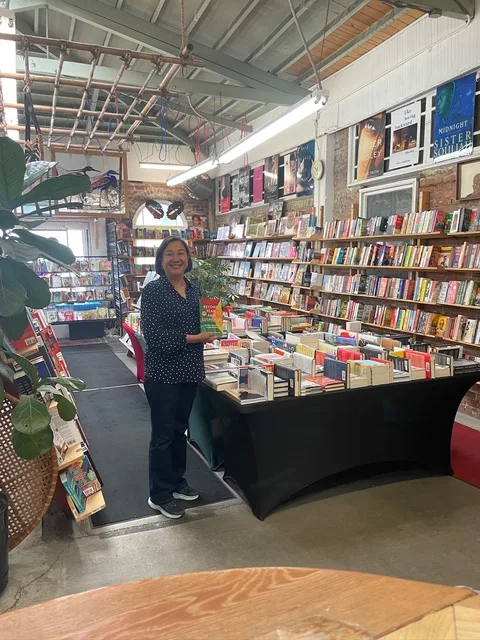
In the overwhelming business of marketing and promotion, a good place to start is the independent bookstore. Fortunately, according to the American Booksellers Association (ABA), we have a thriving independent bookstore scene. The number of bookshops has increased yearly for the last 12 years. ABA data registered a 580% increase in sales since 2020. The US Chamber of Commerce also saw an uptick in sales in 2024 after a two-year decline. These figures aside, independent bookstores are more likely to support women authors or those coming from marginalized groups.
Authors may find a cross-country trip costly, especially if they’re paying out of pocket. That’s understandable. I did it because I had another reason to drive across the country. I needed more material for my next book. The first trip I took was a few years ago. I knew then I had to go again. It’s not an option for everyone, but if you can swing it, it is well worth the cost. The interaction with bookshop owners and their employees alone will be something you will always remember. For me, it was also a useful lesson in emphasizing the relationship-building aspect of these encounters and not their transactional component.
Make Your List and Email Before Your Visit
Should you decide a trip is worthwhile, the next step is to research potential bookstores. Given my book’s subject, I mentioned earlier that I targeted minority bookstores since, based on my due diligence, they were more likely to carry the book. After finalizing the list, I emailed everyone, described what the book is about, mentioned the reviews it received, and hyperlinked these reviews. I also explained why their bookstore was a good fit. I then attached an info/sell sheet prepared by my publisher to help them decide whether to sell and/or display the book on their shelves. The email concluded with the date and time of my visit.
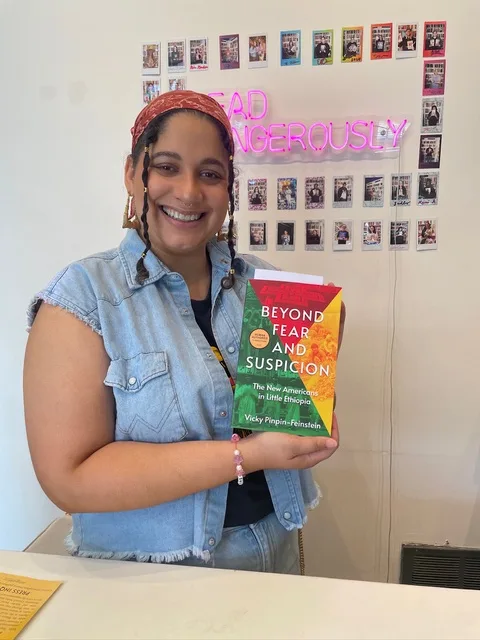
A word about your list. Although you’ve done your best to create a list, be open to the possibility that the bookstores you visit may suggest other bookstores. Be flexible in modifying your list and schedule. Booksellers know their market. Heed their suggestions. Also consider this: Not every entry on your list will be the fit you thought it was. In the three weeks it took me to travel, the choice to include a bookstore on the list depended on my assessment of what they said on their websites. Despite that, a few bookstores were definitely not suitable.
Practice, Practice, Practice
The unsuitable entries on your list bring another suggestion you should consider: how you approach them matters.
Read the room and adjust your delivery based on whether you are speaking with a busy owner or a staff member with only a few free moments. I will assume, like me, you will be wobbly the first few times. You will still learn something with every interaction. Use it on your next visit, and the next, and so on. Before long, you would have developed a unique way to approach them. This would also lessen the feeling that you were always asking for a favor. The lessons will differ for everyone, so be attentive to each experience.
Still, there are some lessons an author can adapt to his or her needs. These are the lessons I share here.
Survey the Lay of the Land
When you enter the shop, take the time to look around and browse. What books do they display on the front table? New York Times bestsellers? Fiction, nonfiction, or both? When you go to the shelves, how are the books arranged? Other than fiction and nonfiction, are the books organized according to different subgenres, interests, or themes?
In my case, I was looking for sections like African American, African Diaspora, Ethnic Studies, Sociology, Women Authors and Immigrants. Here, it will aid your search if you use the SEO keywords for your book. These few minutes of browsing will give you information you can’t find elsewhere. When you are ready to talk to them, utilize this information as conversation starters.
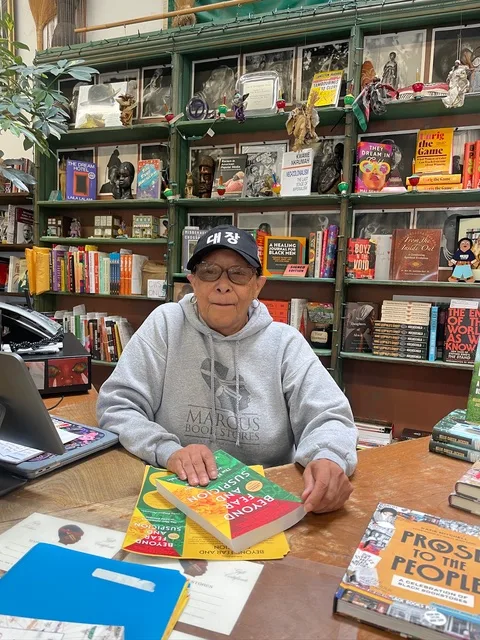
After introducing yourself, avoid telling them the purpose of your visit straight away. Instead, ask what books do well in their store. Or about books that their patrons specially order. Maybe even find out about their successful literary events and ask why these resonated with the community. This will show you are interested in them and are sensitive to their challenges as small business owners.
When the timing is right, tell them why you are there. Remind yourself that your pitch is not a performance. Rather, it is a conversation starter. Think: “How do I connect?” instead of “What do I say?”
Connection and Community
While the traditional author-bookstore relationship can feel transactional, it does not have to be. Think of it as building connections. Consider the long term. Strive for a relationship. You are likely to write another book. Building your connections now can help with your future books. For booksellers, partnerships are essential in sustaining a thriving independent bookstore environment.
I was fortunate to find early success in doing this. Before I started the cross-country tour, I traveled to upstate New York to visit family and went to Manhattan afterward to drop by bookshops in Astoria, Brooklyn, Harlem, the Upper East Side, and the Village after emailing them in advance.
A few stores agreed to carry my book. But I wasn’t sure I had found an effective way of approaching them. My comfort grew after realizing this was more than just a transaction. Those early attempts taught me that it shouldn’t always be about your book.
In Minneapolis, I met an owner, and instead of beginning with my request, I asked about her store’s mission after I surveyed the kinds of books she sells. Mary was a former teacher who wanted to encourage a love of reading among African American children and to share her space for locals to gather as a community. I thought her reply pointed toward a potential synergy, which I used to engage her further. Soon after, she said she would be proud to display my book and sell it. She also agreed to a reading and book signing in the spring.
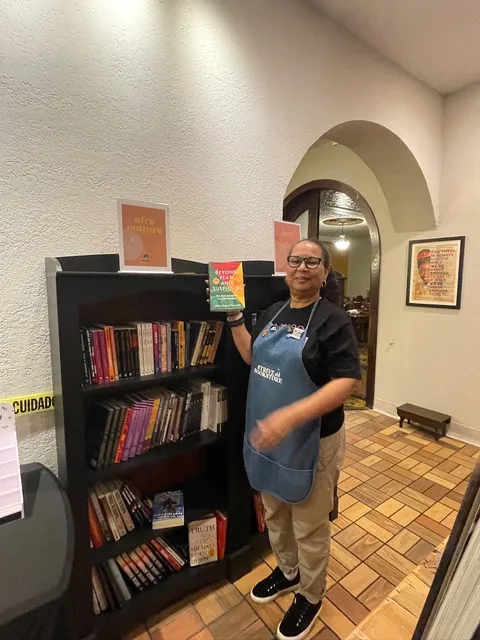
A similar thing happened at another bookstore in Chicago. The owner had arranged the space for cozy author events. I will return there in the spring. On the city’s South Side, the African American man who has owned a bookstore for decades was initially skeptical. But when I told him how the book’s themes resonated with the histories of immigrants and Black families, his eyes lit up. He showed me the books on his shelves, demonstrating his prodigious knowledge of all things African. We had a meaningful exchange about the subject, and he requested a few copies before I left.
Exploring the Relationship & the Little Things That Matter
The transition from needing to make a sale to building a relationship will go a long way in moving your pitch from a request to a proposition. Authenticity happens when you are deliberate and earnest during this transition.
The trip wasn’t just about getting my book on shelves. I saw it as being connected to the world of indie booksellers and the communities supporting them. They anchor local residents invested in the welfare of their communities. Their owners and staff are passionate curators who know their markets well. When an author walks in, he or she is not just someone with a book but also a potential partner. Booksellers will promote your book on their social media, bring new customers in for a signing, or collaborate on a future event. Authors are a valuable—and often untapped—resource for driving traffic and building buzz. Listening and asking questions are key to this collaboration. Also, recognize this is an ecosystem that needs nurturing from both sides.
Visiting independent bookstores dotting America convinced me this was a realistic, even if exhausting, path to marketing and promoting my book. Because the path wasn’t a straight line, I had to be flexible. The open road that linked states to each other had a way of teaching me things. Passion and endearing conversations with shop owners colored this open road.
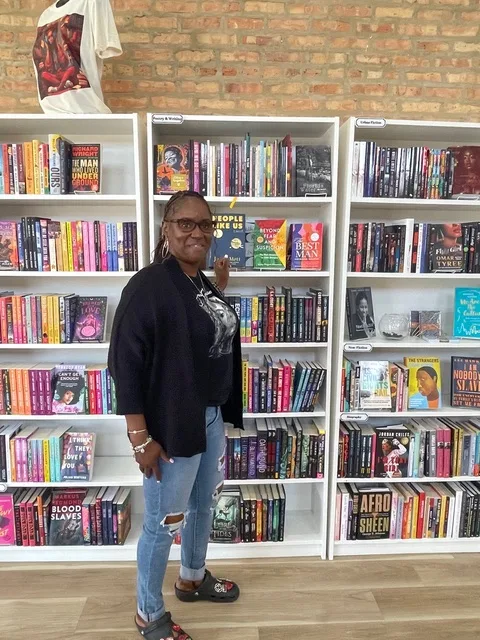
Often, it was also about the small gestures. Be mindful of the store’s time. Call ahead. Be respectful when the owner or employees are busy. Have your business card ready or, in my case, a digital business card that they scanned with their smartphones. Always look for little openings to engage. In one store, I found out they supported a project that donated books to women in prison. I asked about it and was told I could donate through their website, which I did. In another shop in Columbus, a green pennant was on a wall with the words “Welcome Refugees.” I used it to start a conversation about how the pennant would comfort refugees, and added that my book includes some of their stories. This began an enlightening conversation about the plight of refugees and immigrants.
I always brought a review copy in case they wanted it. It was while carrying a book in my arm as I returned to the parking lot that a young man saw the book, and its bold colors attracted him because it reminded him of Africa. Being from Sierra Leone, he was keen to read it and bought a copy once I told him what it was about.
On a trip that has so many moving parts like this, it is helpful to have a companion. I traveled with my husband, who was efficient at mapping a time-saving daily itinerary. The true reward on this journey was about discovering a vibrant community of people who believe in the power of stories. Now, I am ready to explore another path toward getting my book to other readers.
Are you a writer, too? Submit your manuscript to Atmosphere Press.

Atmosphere Press is a selective hybrid publisher founded in 2015 on the principles of Honesty, Transparency, Professionalism, Kindness, and Making Your Book Awesome. Our books have won dozens of awards and sold tens of thousands of copies. If you’re interested in learning more, or seeking publication for your own work, please explore the links below.
